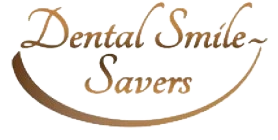Digital X-rays
Dental practitioners are more frequently using digital dental radiographs (digital X-rays) nowadays to more accurately identify, classify, treat, and monitor oral problems and illnesses.
Digital radiography is a form of X-ray imaging that replaces standard photographic X-ray film with digital X-ray sensors to provide improved computer images of teeth, gums, and other oral structures and diseases. Digital dental pictures are obtained using one of three methods: direct, indirect, or semi-indirect. The direct technique records pictures using an electronic sensor inserted in the mouth. The indirect approach uses an X-ray film scanner to generate digital pictures of typical dental X-rays. To convert dental X-rays into digital film, the semi-indirect digital approach includes a sensor and scanner.
Types of Digital Dental Radiographs
Digital dental radiographs can be taken either within (intraoral) or outside (extraoral) the mouth. The most often used dental X-ray, intraoral X-rays, give remarkable detail and are used to diagnose cavities, examine the condition of growing teeth, and monitor tooth and bone health. Extraoral X-rays are not as detailed as intraoral X-rays and are not used to diagnose specific dental issues. They are, however, used to detect impacted teeth, evaluate jaw growth and development, and identify possible abnormalities connecting teeth, jaws, and temporomandibular joints (TMJ) or other facial bones.
Intraoral X-rays
Bitewing X-rays: The upper and lower teeth in one area of the mouth can be seen in detail on bitewing X-rays, which are obtained while the patient is biting down on film. Each bitewing depicts a tooth from its crown (top) to around the level of the underlying bone. In addition to assessing the fit of dental crowns or restorations and the marginal integrity of tooth fillings, bitewing X-rays are also used to identify between-tooth decay and changes in bone density brought on by gum disease.
Periapical X-rays: The entire tooth is visible on periapical (limited) X-rays, from the crown to the supporting bone in one area of the upper or lower jaw. To find anomalies in the surrounding bone structure and root structure, periapical X-rays are performed. Periapical X-rays, which display bone loss around each tooth, are helpful in diagnosing endodontic lesions (abscesses) and treating disorders including periodontitis and severe gum disease.
Extraoral X-rays
Panoramic (Panorex) X-rays: The whole mouth, including every tooth in the upper and lower arch, is seen in a panoramic (Panorex) X-ray, which requires a machine that revolves around the head. Using panoramic X-rays, you may diagnose bone tumors and cysts, find impacted wisdom teeth, and plan your dental implant treatment. After fires, accidents, or other tragedies, panoramic films are utilized for forensic and legal purposes to identify otherwise unidentifiable victims.
Cone beam computed tomography(CBCT): Cone beam computed tomography produces a three-dimensional view of the body's internal architecture. CBCT is used to detect issues with the face bones, such as tumors or fractures, and is usually performed at a hospital or imaging facility. However, dental offices are now using it more frequently. To prevent potential issues before and after surgical operations, CT scans are also utilized to examine the bone for dental implant implantation and challenging tooth extractions.
Multi-slice computed tomography (MCT): The layers of the mouth are blurred in multi-slice computed tomography (MCT), which only displays one layer or "slice" of the mouth. Structures that are challenging to view clearly can be examined using this type of X-ray.
Cephalometric projections: Cephalometric projections, which display the complete head, are useful for examining teeth in relation to a patient's jaw and profile. Cephalometric projections are used by orthodontic professionals, who focus on straightening and aligning teeth, to create treatment plans.
Sialography: A dye (radiopaque contrast agent) is injected into the salivary glands during sialography in order to make them visible on the X-ray film. A sialography is often used to diagnose issues with the salivary glands, such as blockages or Sjogren's syndrome, an autoimmune condition that impairs the production of tears and saliva.
Experience the future of dental care at Dental Smile-Savers in Bronx, New York. Dr. Finlay and our expert team are dedicated to providing you with precision and efficiency in dental diagnostics. Book your appointment now and step into a new era of dental excellence!
Schedule Your Visit!
*Full Name
*Phone Number
*Comments










